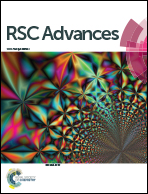Intumescent flame retardancy of a DGEBA epoxy resin based on 5,10-dihydro-phenophosphazine-10-oxide
Abstract
5,10-Dihydro-phenophosphazine-10-oxide (DPPA) served as a co-curing agent for 4,4′-diaminodiphenylmethane in the curing reaction of bisphenol A diglycidyl ether (DGEBA) epoxy resin (EP). 1H NMR tracking the reaction of DPPA with DGEBA revealed that the P–H bond in DPPA had a higher reactivity with the epoxy group than the N–H bond. DPPA could promote the curing reaction of DDM with DGEBA. DPPA endowed the epoxy resin with a high flame-retardant efficiency due to the unique combination of phosphorus and nitrogen in the phenophosphazine ring. The cured epoxy resin could achieve a V-0 rating in the UL-94 test with a limiting oxygen index (LOI) of 33.6% at only 2.5 wt% DPPA. The reduced peak heat release rate and total heat release, and increased char yield further verified the excellent flame retardancy of EP. The flame-retardant mechanism of the epoxy resin was investigated by thermogravimetry-Fourier transform infrared spectrometry (TG-FTIR), scanning electron microscopy, elemental analysis and FTIR spectrometry. The results indicated that DPPA catalyzed the formation of the rigid intumescent char and the generation of the blowing-out effect in the epoxy resin matrix.


 Please wait while we load your content...
Please wait while we load your content...